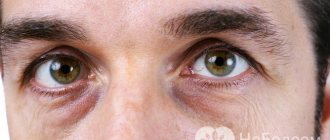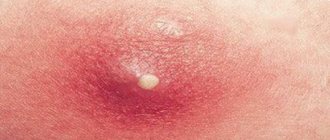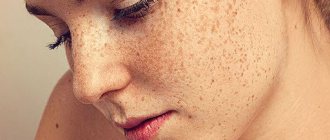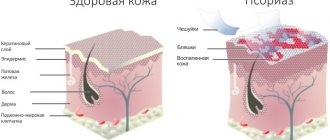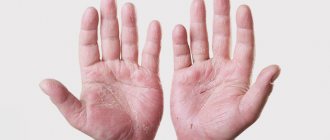A crack in the heel is not only a cosmetic defect that causes a lot of inconvenience.
In some cases, this is a sign of a chronic disease or fungal infection. Women with cracked skin on their feet cannot afford to wear open shoes, feeling discomfort at the beach, in the pool, in the gym and in all places where bare feet are required. Let's take a closer look at why cracked heels appear, the reasons, and treatment at home using traditional and folk remedies. Let's talk separately about prevention.
Dust and dirt constantly get into the cracks, provoking a further aggravation of the problem. In addition, even the smallest damage to the foot can cause serious pain, itching, discomfort, and burning, because the legs are constantly under stress when walking.
TOP 7 reasons for cracked heels
When walking, not only bone and joint formations, but also the covering of the foot are subjected to increased stress.
During movement, the skin stretches and contracts, deforming its own cells. The lateral surfaces of the heel, where the greatest tension is created, are subject to particular changes. When hyperkeratosis joins these processes, the stratum corneum thickens significantly. Moreover, as the size increases, its elasticity is lost, and accordingly, under normal loads, the skin begins to crack and burst.
So, what causes cracked heels? Here are the TOP 7 main reasons in adults:
- Fungus. Mycosis of the feet is one of the most common ailments. A high risk of infection occurs among those who visit public beaches, swimming pools, and showers without shoes. Spores are well preserved in a humid environment. Very often, fungus develops in people with an active lifestyle; this is constant sweating of the feet. Since overheating almost doubles the likelihood of developing the disease. In addition to cracks, dermatophytosis is manifested by itching, burning, and deformation of the nails.
- Diabetes. With “diabetic foot” the changes are characterized by the absence of pain. Glucose not only disrupts tissue trophism, but also affects nerve fibers, changing sensitivity. Regular deterioration of blood supply leads to changes in the skin of the legs. After all, blood supplies not only oxygen, but also all nutrients. Diabetes can also manifest itself as dry skin, the formation of ulcers, abrasions, and deep cracks. Possible foot deformity - hammertoes or hooked toes.
- Hypovitaminosis. Insufficiency of vitamins A (retinol), E, and the trace element zinc can lead to excessive dryness, decreased elasticity, and degenerative changes.
- Anemia. Iron deficiency not only affects the oxygen supply to tissues. The microelement is also found in tissues, taking part in the formation of proteins and enzymes. If it becomes insufficient in the body, the division and structure of cells is disrupted, leading to dystrophic changes. Epidermal cells, which are renewed quite often, are most susceptible to negative influence. Skin manifestations of iron deficiency anemia include.
- Problems with the spine. Often, radicular symptoms disrupt the innervation of the lower extremities. Almost the entire process suffers, which makes the skin on the legs thin, vulnerable, and with poorly healing wounds. Typically, such problems begin with prolonged compression of the root, especially with compression of several formations.
- Skin diseases - ichthyosis, psoriasis, plantar keratoderma. The most extensive factor that changes the skin on the heels. With dermatoses, the skin dries out, becomes susceptible to external influences, and becomes inflamed. Any impact can provoke microtrauma, which subsequently develops deep skin damage - a crack. Moreover, they often become gateways for secondary infection, which only aggravates the problem.
7) External factors. Usually these are “provocateurs” of problems, which, with constant exposure, can cause damage to the integrity of the skin of the heels.
What can cause cracks:
- Obesity – excess weight significantly increases pressure on the foot. In addition, this condition is often accompanied by metabolic disorders, which also negatively affects the skin.
- Tight, uncomfortable shoes – incorrect selection of shoes can result in increased, uneven load. Moreover, not only excessively narrow shoes are dangerous, but also worn-out heels and worn-out pairs. In the latter, the leg is not fixed, so when walking it constantly rubs, which provokes roughness and other “joys”.
- Deformation of the feet - flat feet, hallux valgus, clubfoot - also lead to a redistribution of the load and, over time, provoke the appearance of calluses, corns, and hyperkeratosis.
- Standing work or prolonged stay “on your feet” - in such cases, increased pressure is observed almost every day, the skin cannot cope with the resulting microtraumas, triggering increased reproduction of cells of the stratum corneum, and the old ones, due to active growth, do not have time to exfoliate, leading to roughness and dryness , and subsequently – to cracks.
For a more detailed analysis of why heel damage occurs, we will consider each of the reasons separately.
Pathological conditions
Obesity
Obesity is gradually becoming the norm due to the steady increase in the number of obese people. Few patients associate foot problems with their excess weight. Meanwhile, obesity affects almost all tissues and systems of the body. Large body weight is always a companion to hypertension and increased cholesterol levels. This triad disrupts blood circulation and innervation of the hands and feet, the skin on them becomes thinner, and deep cracks appear. Increased stress on the heels aggravates foot damage. You can diagnose obesity yourself, but treatment should be carried out under the supervision of a specialist.
Diagnosis of obesity
BMI = weight (kg)/height in square meters. (m2) BMI 18.5 - 24.9 - normal weight
60kg/ 1.7*1.7m=21.76 | 25 — 29,9 | preobesity (excess body weight) |
| 30 — 34,9 | initial degree of obesity | |
| 35 — 39,9 | second (middle) degree | |
| more than 40 | the most severe degree of obesity |
This formula will not be absolutely accurate for athletes, the elderly, children and pregnant women.
In 95 percent of cases, obesity is nutritional, resulting from regular overeating. This means that you can get rid of the consequences of obesity by eliminating errors in your diet. And only in five percent of cases is hormonal correction necessary. It must be remembered that cracked heels are not the only and not the most dangerous complication of excess weight.
Consequences of obesity
- type 2 diabetes mellitus or insulin resistance
- coronary heart disease, hypertension
- arthritis, arthrosis
- hypoventilation syndrome
- infertility
- disruption of tissue trophism, resulting in decreased sensitivity, damage to the skin, frequent microbial complications
The main principle of treating obesity and its consequences is an integrated approach. Changing your lifestyle, keeping a food diary, and in severe cases, medication and surgical methods will help you get rid of all the troubles, including those on the skin of the feet.
Fungal infections of the feet
Often, treating cracked heels with moisturizing creams does not give the desired result, and similar symptoms appear in other family members. Most likely, in this case, the source of the problem is yeast or mold. By itself, fungal infection of the feet cannot cause cracked heels, but often they occur simultaneously.
Symptoms of mycosis of the feet:
- primary lesion of interdigital folds
- frequent involvement of nail plates in the process
- roughening of the skin, thickening of the stratum corneum
- sometimes – the addition of an allergic reaction
- itching of varying intensity
Usually the disease begins with subtle peeling or painless cracks in the spaces between the fingers. Despite the absence of a clear clinical picture, the patient is contagious to the people around him. After some time, the fungus takes over most of the foot, and the disease develops into one of its forms.
Forms of fungal infection of the feet:
- Intertriginous is the most common form. Characterized by slight redness, peeling and cracking of the skin.
- Dyshidrotic - the formation of blisters on the skin of the foot, erosions after their opening often become infected. Allergic rashes and recurrent nature are characteristic.
- Squamous - the only sign is peeling of the skin.
- Squamous-hyperkeratic - against the background of peeling, calluses form, the skin of the foot acquires a purple tint.
The final diagnosis can be made only after microscopy of the affected skin scales. The fungus found there is identified and treatment is prescribed depending on the type of mycosis and its form.
In case of isolated damage to the skin of the foot, local antimycotics are used, if damage to the nails occurs, general drugs are additionally prescribed. In addition, you need to change your shoes or fill your old ones with antifungal powder.
Diabetes
The problem of damage to the legs, and especially the feet, is acute for patients with type 2 diabetes mellitus. The cause is progressive neuropathy, the rate of which depends on the treatment of the disease. It is impossible to completely stop the process of trophic disorders, but monitoring blood glucose levels and paying close attention to the condition of the legs is quite possible.
Principles for preventing diabetic foot:
- Maintaining glucose levels close to normal. It is chronic hyperglycemia without proper correction that leads to damage to blood vessels and nerves. It is impossible to restore their function with the help of vascular drugs. Only taking properly selected hypoglycemic medications or doses of insulin can significantly slow down the formation of neuro- and angiopathy of the legs.
- Normalization of cholesterol levels (see how to reduce cholesterol without medications). Cholesterol causes blockage of small blood vessels in the foot, disrupting an already poor diet.
- Wearing comfortable and sometimes orthopedic shoes.
- Proper foot care: all inflammatory processes on the feet of a diabetic should be treated with the help of a specialist (even minor abrasions and cracks)
- daily washing and drying of feet
- control of water temperature when swimming. The sensitivity of the feet in diabetes is impaired, so it is easy for the feet to burn or become cold.
- to give up smoking
- regularly lubricating the feet with urea cream
Psoriasis
The variety of manifestations of this complex disease includes damage to the feet with the formation of cracks on them. The causes of psoriasis have not yet been determined; hereditary predisposition, chronic infections and an imbalance in the immune system play an important role (see causes of psoriasis).
Psoriasis can occur in normal and severe forms. Psoriasis of the palms and soles is classified as a mild, isolated form. Sometimes such symptoms also occur with generalized lesions. People who do heavy physical labor are prone to foot damage. Reddish plaques with white lamellar peeling form on their feet, often accompanied by damage to the nails. The plaques can become infected, forming deep fissures and causing pain. Treatment of psoriasis consists of diet, the use of medications (see ointments for psoriasis), sanitation of foci of chronic inflammation (see treatment of psoriasis at home).
Other diseases affecting the skin of the foot
In medical practice, there are a huge number of pathologies that directly or indirectly cause cracks in the heels. All of them can be treated or controlled with medication. Therefore, it is important to make a correct diagnosis and prescribe effective medications. If discomfort appears in the area of the foot, cracks and erosions on the sole, which do not disappear after using a moisturizer, it is necessary to undergo an examination.
Getting rid of painful cracked heels will allow you to gain freedom of movement. And movement is life!
Author:
Evtushenko Anna Aleksandrovna obstetrician-gynecologist
How to treat cracks?
You need to seek help from a specialist. A dermatologist will help determine the cause of cracked heels and prescribe appropriate treatment. If necessary, he can refer you for a consultation with an endocrinologist or gastroenterologist.
If a number of skin or fungal diseases are detected, the dermatologist will be able to prescribe a course of special treatment and give recommendations for caring for the skin of the feet. In some cases, with particularly deep cracks, which can form due to diabetes mellitus and other serious diseases, antibiotic ointments are recommended to the patient.
Ointments for the treatment of cracks
TOP 7 ointments for treating cracked heels at home:
| Name and mechanism of action | How to use it correctly |
| Radevit ointment (contains vitamin E, vitamin A, vitamin D2, emulsion wax and glycerin). The ointment stimulates skin regeneration and has an anti-inflammatory and disinfectant effect. Vitamins E, A and D2 promote rapid restoration of damaged tissues | Radevit is applied in a thin layer twice a day. Before using the ointment, the skin should be treated with an antiseptic. |
| Balzamed ointment (contains provitamin B5, vitamin E, vitamin A, glycerin and lactic acid). It has a moisturizing and nourishing effect on the skin of the feet, preventing the formation of cracks, redness, and irritation. Vitamins A and E increase skin resistance to infections and damage | The ointment is applied effortlessly to the area of cracks using massaging movements. The drug should be used daily, after water procedures. |
| Lamisil cream . Active ingredient terbinafine 1 g. The cream fights infection, prevents and destroys fungus. Promotes rapid healing of cracks and restoration of affected tissues. | Apply a small amount of cream to problem areas once a day. Before using the cream, feet should be washed with warm water and dried with a towel. |
| Gel Zazhivin (contains tea tree essential oil, milk thistle oil; vitamin F and sage extract). Promotes rapid healing of cracked heels, has a wound-healing and bactericidal effect. | It should be applied before bedtime with massaging movements on pre-washed feet. |
| BioAstin cream (contains flax oil, sage extract, mint extract, clove essential oil, tea tree essential oil, urea and allantoin). It has an antifungal effect, fights infections, protects the skin from pathogenic microflora. The oils contained in the cream have a softening effect. Extracts and extracts from plants promote rapid healing of cracks | Apply the ointment to the cleansed skin of the heels with massaging movements. |
| Emergency cream (contains petroleum jelly, wax, glycerin, allantoin, olive oil, vitamins F and E). Has a healing and bactericidal effect. The herbal extracts included in the composition accelerate the healing of cracks. Oils and wax soften and nourish the skin of the feet. Vitamins activate the restoration of damaged skin. | The cream is applied to the affected areas. Before applying the cream, the skin of the feet should be steamed and treated with pumice. Secure the crack on top with adhesive tape, tightening its edges. Wear cotton socks. |
| Dardia Lipo Balm (contains urea, microcrystalline wax, paraffin, petroleum jelly and corn starch). Urea in the cream combats dryness, effectively softening rough skin. Wax and paraffin normalize the water balance of the skin. The cream has a restorative effect, promotes the rapid healing of cracks | Apply with circular massaging movements. Use as a nourishing cream twice a day. |
Cracked heels can cause a lot of trouble for their owner and become a gateway for infection. Be sure to fix this problem! After getting rid of cracks, do not forget that the best measure to prevent their reappearance will be measures to constantly care for the skin of your feet.
Folk remedies for cracked heels
Not everyone prefers store-bought medications and wonders how to treat cracked heels with folk remedies. There are many methods and recipes for home therapy for this problem. We have selected the simplest and most effective ones.
Foot baths
The baths are designed for steaming the stratum corneum. This will make the skin more responsive to procedures to remove roughened dermis. This therapy is very pleasant and gives a lot of pleasure.
However, like any other methods, it has contraindications:
- wounds, skin damage;
- allergy;
- individual intolerance;
- the first day after the pedicure.
Making baths is very simple. Water at a comfortable temperature is poured into the basin, and agents are added, depending on the type of therapy. Then the legs are lowered into the basin and steamed for 10–15 minutes.
For medicinal purposes, baths are done daily. Then - once a week to maintain the result.
Additives for baths in the ratio of 2 liters of water:
- peat oxidate;
- milk + starch 2 tbsp each;
- hot whey;
- 2 tbsp. soda + a little liquid soap;
- 30 grams of starch;
- about 1 liter of chamomile or calendula decoction;
- herbal mixture of St. John's wort and nettle.
To soften the skin, regular bath salts, which are sold in any cosmetics store, are also suitable.
Compresses and masks
Compresses and masks are applied after baths or after showers. As part of the course of therapy, procedures are performed daily, and then 1–2 times a week.
There are 10 basic recipes:
- A mixture of glycerin and apple cider vinegar (2:1).
- 100 gr. mix flour with 1 tbsp. l. vegetable oil and 30 gr. melted honey. The mask is applied at night, and socks are put on top.
- Curd compress from one ingredient.
- A mixture of any cosmetic oils. Squeezes made from olives, grape seeds, corn and jojoba are best suited.
- Vitamin E capsules.
- Butter.
- A mixture of grated apple, beer and butter. For one fruit you need 100 ml of beer and 2 tbsp. l. oils
- A mixture of ammonia 10% and glycerin (1:1).
- Medical bile.
- Chopped celery and butter (1:1).
It is recommended to wear natural cotton socks over the compresses to allow the skin to breathe.
Natural ointments and creams
You can make your own creamy products.
Recipe 1. Ingredients:
- badger fat;
- decoction of celandine and calendula.
Preparation:
- The fat is heated in a water bath.
- The finished broth is poured into heated badger fat.
- The ingredients are mixed together.
After the mixture has cooled, apply it to the affected areas. The ointment should be warmed before each use.
Recipe 2. Ingredients:
- vinegar 9% - 50 ml;
- glycerin – 50 ml.
The components are mixed together and applied to the heels before bed. Cotton socks are worn on top.
Recipe 3.Ingredients:
- petrolatum;
- a mixture of dried herbs calendula and plantain.
The ratio of Vaseline and herbs is 1 to 10. The components are mixed together, and the finished mixture is applied to the skin of the feet.
You can add 1-2 drops of essential oil to ready-made homemade ointments for the best effect.
What to do with large and deep cracks?
If cracks develop on the skin of the foot, to provide first aid to yourself, you should take the following measures, which will give an excellent result in just 2 weeks:
- Buy Glue BF 6 (60-80 rubles) at the pharmacy, don’t be surprised, it is approved by dermatologists and recommended for use in this pathology. Apply a few drops to the clean skin of the crack along its entire length, wait until the glue dries. This is necessary so that the wound heals and does not deepen; in 5 days the crack will heal and the glue will be removed along with the keratinized layer of skin.
- Then you don’t need to do anything for 7 days. Afterwards, you should take baths in warm water and slowly, not at once, but gradually cleanse the foot of keratinized tissue.
- Immediately after the bath, apply creams with salicylic, lactic, and glycolic acid. You can use Zorka (veterinary) cream, which contains floralizin; this is a very effective remedy for cracks in the skin. Use moisturizers in the evening and during the day.
- The condition of the skin, including the skin of the legs, can be improved by consuming 1 tbsp orally on an empty stomach. spoons of olive oil, but it should be borne in mind that this method is not suitable for everyone, for example, it is contraindicated for people with gallstones (the oil has a choleretic effect).
Mechanical removal of keratinized epidermis
You can get rid of dead skin cells mechanically. The algorithm of actions in this case will be as follows:
- make a foot bath with a medicine to steam the epidermis and prepare the skin for treatment;
- walk over your feet, paying special attention to the heels, using a pumice stone and a special brush;
- rinse your feet and wipe dry;
- massage with oil;
- treat the epidermis with an antibacterial drug;
- apply a healing preparation to the skin.
Carry out the procedure very carefully so as not to damage the skin and not aggravate the situation.
Prevention
It is clear why cracks in the heels occur. Based on the reasons, you can minimize the risk of skin cracking (see photo) by following the following recommendations:
- Wear comfortable shoes made from natural materials.
- Buy cotton socks, knee socks and tights.
- Regularly treat the skin with pumice to remove the stratum corneum (once a week).
- Apply foot cream to your heels every day.
- Avoid walking for long periods of time without shoes on the ground or on a hot beach, so as not to injure the skin of your feet.
- Treat chronic diseases in a timely manner.
- Include enough foods rich in vitamins (fruits, greens, berries) in your diet.
Are you worried about deep cracks in your heels? Listen to the recommendations of dermatologists, arm yourself with advice from traditional healers, and carry out a course of treatment. Your efforts will not be in vain.
Anal fissure Diabetic foot - drug treatment and foot care at home Sunburn Neurodermatitis: causes, psychosomatics and treatment Allergic dermatitis Cheilitis
Conclusion
Peeling heels may indicate a lack of timely hygiene or the presence of a number of diseases. In order to prevent the integument of the feet from becoming coarser and further covered with cracks, you should carefully monitor your health, eliminating the symptoms of diseases in a timely manner. It is also useful to do a systematic pedicure, treating the surface of the feet with softening and moisturizing agents.
We will look at the causes and treatment of this problem in more detail in this article. This common ailment of dry skin, firstly, not only has a cosmetic effect. Secondly, it can cause very painful sensations from deep cracks. Agree that our legs are subjected to unimaginable tests every day. We squeeze them into uncomfortable, non-breathable shoes and spend long periods of time on our feet. And despite all the daily stress, we pay attention to our feet only when we begin to experience discomfort and pain. To get rid of the problem, it is necessary to determine the cause of the loss of elasticity and the formation of thick skin on the heels. Perhaps one emollient cream will not be enough.
